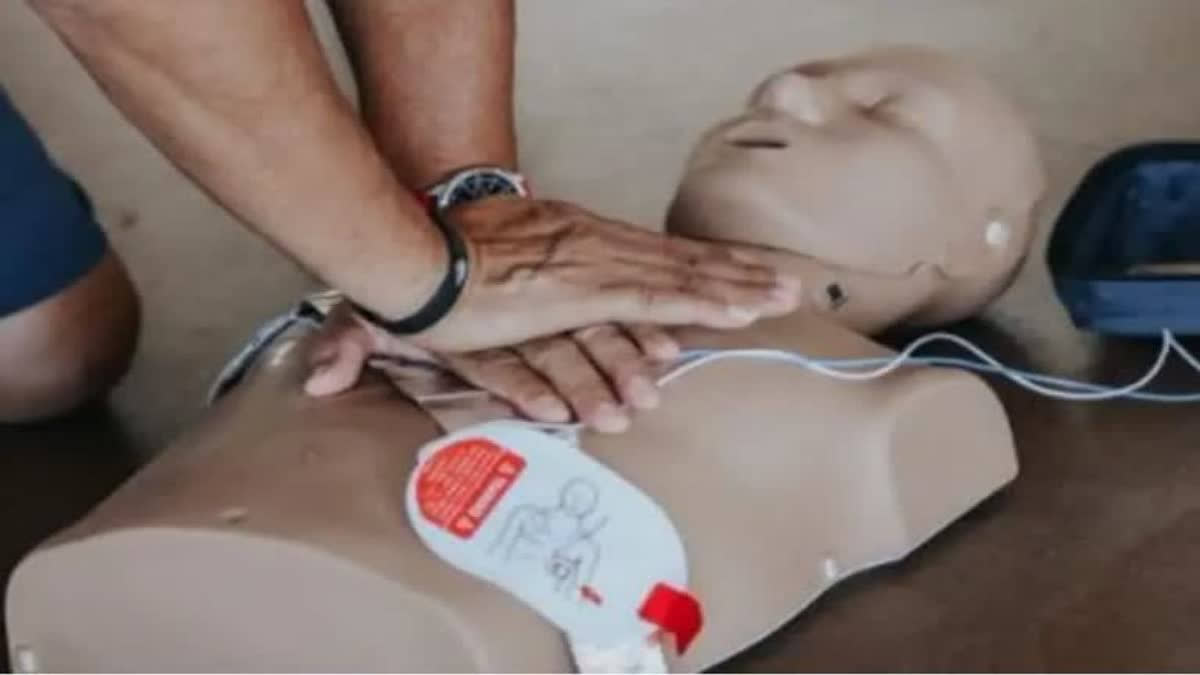New Delhi: Underscoring the urgent need to expand Cardiopulmonary Resuscitation (CPR) awareness and training across the country to save lives, the latest study conducted by the Indian Heart Journal has revealed that less than 1% of the country's population has undergone formal CPR training, with only 2-4% of cardiac arrest victims receiving bystander CPR during emergencies.
Sudden cardiac arrest (SCA) is a leading cause of death globally and in India, cardiovascular diseases (CVDs) account for nearly 28% of total deaths annually. With an estimated seven lakh cases of SCA each year, most occurring outside hospitals in homes, public spaces, or workplaces, timely intervention through CPR can significantly increase survival chances.
Despite this, survival rates from out-of-hospital cardiac arrests (OHCA) in India are as low as 2-5%, compared to 20-30% in countries with widespread CPR education.
“India witnesses hundreds of thousands of cardiac arrest cases every year, many of which occur in non-medical settings. In such instances, the crucial window to save a person’s life is often just a few minutes. Bystanders trained in CPR can make the difference between life and death, yet most individuals lack the knowledge or confidence to perform it. In countries with widespread CPR education, such as the United States and Norway, survival rates from out-of-hospital cardiac arrests are notably higher, illustrating the impact of effective public training,” said Dr Tamorish Kole, Chair, Clinical Practice Committee, International Federation for Emergency Medicine, while speaking to ETV Bharat.
Several factors underline the urgent need for CPR education in India. Urbanisation and the rise in lifestyle diseases have contributed to an increasing incidence of heart disease, even among the younger population.
“As more Indians adopt sedentary lifestyles and unhealthy habits, the risk of sudden cardiac events continues to rise. This growing burden of heart disease, combined with low public awareness of CPR, presents a significant public health challenge. Training community members in CPR not only saves lives, but also empowers individuals to take quick, effective action in emergencies, fostering a safer society,” Dr Kole said.
The American Heart Association’s (AHA) Resuscitation and Healthcare Quality Summit 2024, held recently in Hyderabad highlighted the future of cardiovascular research, technology and education.
“The key focus of AHA was expanding public awareness of Cardiopulmonary Resuscitation (CPR) and its life-saving potential, particularly in countries like India. This milestone underscores the essential role of CPR in reducing cardiac fatalities and calls for Indian healthcare systems and the public to prioritise life-saving training efforts,” Dr Kole said.
However, there are substantial barriers to CPR education in India. While countries like the US have integrated CPR into school curricula and workplace training programmes, India lacks widespread formal initiatives.
Furthermore, cultural hesitations, such as fear of legal repercussions or concerns about contamination, often prevent bystanders from intervening during emergencies. “To address these barriers, a coordinated effort is required. The Indian government, healthcare authorities, professional societies, NGOs and private sector must collaborate to prioritise CPR education through national campaigns, school programmes and community outreach,” said Dr Kole.
He said that the inclusion of CPR training in school curricula would ensure that future generations are equipped with this essential skill.
Public-private partnerships can help establish free or affordable training centres across the country, while online platforms and mobile apps can make training more accessible, especially in local languages, Dr Kole said.
“Public demonstrations and mass awareness campaigns can also play a key role in increasing CPR knowledge. Organising regular CPR workshops in public spaces, workplaces and schools, as well as leveraging social media and celebrity endorsements, can help normalise CPR education. Involving community health workers (ASHA) and first responders in rural areas could extend the reach of training programmes, ensuring that even remote population are prepared for emergencies,” he said.
According to Dr Kole, with the rising incidence of heart disease and sudden cardiac arrest, empowering the public with CPR skills holds the potential to save innumerable lives.
“By cultivating a culture of CPR awareness and readiness, India can make substantial strides in reducing cardiac fatalities and building healthier, safer communities across the nation. The moment to act is now—learning CPR can be the difference between life and death,” Dr Kole said.
Read more: Jaipur International Airport Sets Up 5 Machines To Assist Passengers During Sudden Cardiac Arrests



